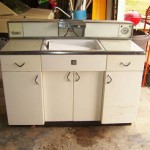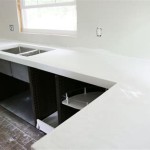Antiquing Kitchen Cabinets With Stain: A Comprehensive Guide
Achieving an antique aesthetic in a kitchen remodel or refresh project can significantly enhance the charm and character of the space. While painting is a common method for antiquing kitchen cabinets, using stain offers a unique approach that highlights the wood grain and creates a richer, more nuanced vintage appearance. This method involves layering different shades of stain, strategically distressing the finish, and applying protective topcoats to achieve the desired antique effect. This article provides a detailed guide to successfully antiquing kitchen cabinets with stain.
Choosing the right materials is crucial for a successful antiquing project. This includes selecting the appropriate type of stain, sandpaper, brushes, cloths, and protective topcoat. The type of wood also plays a significant role in the final outcome, as different woods absorb stain differently. Therefore, understanding these factors is the first step in obtaining the desired antique look.
Key Considerations Before You Begin
Before embarking on the antiquing process, several key factors must be considered. These include the existing condition of the cabinets, the desired level of distressing, and the overall aesthetic of the kitchen. Proper preparation and planning are essential for achieving a professional-looking and durable finish.
First, the material of the cabinets should be identified. Solid wood, wood veneer, and laminate cabinets will require different preparation techniques. Solid wood is the most suitable for staining, as it absorbs the stain evenly and allows for deeper penetration. Veneer cabinets, on the other hand, have a thin layer of wood over a less expensive core, so sanding should be done with caution to avoid sanding through the veneer. Laminate cabinets are not suitable for staining and would require a different treatment, such as faux-staining with paints.
Secondly, the existing finish on the cabinets needs to be thoroughly assessed. If the cabinets have a glossy finish, it needs to be removed or roughened to allow the stain to adhere properly. This can be achieved through sanding or using a chemical stripper. If the cabinets are already stained, the existing stain should be compatible with the new stain being used. Testing a small, inconspicuous area is always recommended to ensure compatibility and prevent unwanted reactions.
Thirdly, the desired level of distressing needs to be carefully considered. Distressing techniques such as chipping, scratching, and sanding can add character and authenticity to the antique look. However, over-distressing can make the cabinets appear worn and neglected rather than charmingly aged. It's best to start with subtle distressing and gradually increase it until the desired effect is achieved.
Finally, the overall aesthetic of the kitchen should be taken into account. The antique finish should complement the existing color scheme, hardware, and décor. Consider the lighting in the kitchen, as it can affect the way the stain appears. Natural light tends to highlight the wood grain and the depth of the stain, while artificial light can alter the color perception.
Step-by-Step Guide to Antiquing Kitchen Cabinets With Stain
The process of antiquing kitchen cabinets with stain involves several steps, each requiring careful attention to detail. These steps include preparation, staining, distressing, and sealing. Following these steps meticulously will help achieve a professional and long-lasting antique finish.
Step 1: Preparation. This is arguably the most important step in achieving a successful outcome. Begin by removing all hardware such as knobs, pulls, and hinges. Clean the cabinets thoroughly with a degreaser to remove any dirt, grease, or grime. Rinse with clean water and allow the cabinets to dry completely. Once dry, sand the cabinets with medium-grit sandpaper (120-150 grit) to roughen the surface and create a better bond for the stain. For cabinets with a glossy finish, use a coarser grit sandpaper (80-100 grit) to remove the existing finish. After sanding, wipe the cabinets with a tack cloth to remove any sanding dust. This step is crucial in ensuring a smooth and even stain application.
Step 2: Staining. Choose a base stain color that complements the overall aesthetic of the kitchen. Apply the stain evenly to the cabinets using a brush, foam applicator, or spray gun. Follow the manufacturer's instructions for drying time. Once the base stain is dry, apply a second, darker stain to accentuate the wood grain and create depth. This can be done by applying the stain with a brush and then immediately wiping it off with a clean cloth. The longer the stain is left on, the darker the color will be. Experiment with different stain colors and application techniques to achieve the desired antique effect. Consider using a gel stain, as it can be easier to control and provides a more even application, particularly on vertical surfaces.
Step 3: Distressing. After the stain has dried completely, it's time to distress the cabinets. This is where the character and authenticity of the antique finish are created. Use various tools such as sandpaper, steel wool, a putty knife, or even a hammer to create the desired effect. Sand the edges and corners of the cabinets to simulate natural wear and tear. Create small dents and scratches using a hammer or putty knife. Use steel wool to soften the edges of the distressed areas and blend them into the surrounding finish. Remember to distress subtly at first and gradually increase the effect until the desired appearance is achieved. Consider focusing the distressing on areas that would naturally experience wear and tear, such as around the handles, near the sink, and on the bottom edges of the cabinets.
Step 4: Glazing (Optional). For an even more pronounced antique effect, consider applying a glaze. A glaze is a semi-transparent coating that is applied over the stain and then wiped off, leaving color in the crevices and details of the cabinet. Choose a glaze color that complements the stain. Apply the glaze liberally with a brush and then wipe it off with a clean cloth. Experiment with different application techniques to achieve the desired effect. For example, you can use a sponge to stipple the glaze or a dry brush to create a streaked effect.
Step 5: Sealing. Once the stain and glaze (if used) have dried completely, it's time to seal the cabinets with a protective topcoat. This will protect the finish from moisture, scratches, and wear and tear. Choose a clear topcoat in either a matte, satin, or semi-gloss finish, depending on the desired level of sheen. Apply the topcoat evenly using a brush, roller, or spray gun. Follow the manufacturer's instructions for drying time and application of additional coats. Typically, two to three coats of topcoat are recommended for optimal protection. Lightly sand between coats with fine-grit sandpaper (220-320 grit) to ensure a smooth finish.
Step 6: Hardware Reinstallation. After the topcoat has dried completely, reinstall the hardware. Consider replacing the old hardware with antique-style knobs and pulls to further enhance the antique aesthetic. Clean the hardware thoroughly before reinstalling it to remove any dirt or grime. If the existing hardware is worn or damaged, consider replacing it with new hardware that matches the antique style. This can significantly enhance the overall appearance of the antiqued cabinets.
Choosing the Right Stain and Sealant
The selection of both stain and sealant is paramount to the success and longevity of the antiqued finish. Different types of stain offer varying levels of penetration, color intensity, and durability. Similarly, different sealants provide different levels of protection against moisture, scratches, and UV damage. Understanding the properties of each type of stain and sealant is crucial for making informed choices.
There are primarily two types of stains: Oil-based and Water-based. Oil-based stains offer deeper penetration and richer color, making them ideal for highlighting the wood grain. They also provide better protection against moisture. However, oil-based stains have a longer drying time and require mineral spirits for cleanup. Water-based stains, on the other hand, dry quickly and are easier to clean up with soap and water. They are also less likely to produce strong odors, making them a more environmentally friendly option. However, water-based stains may not provide the same level of color intensity or moisture protection as oil-based stains. Gel stains are another option, particularly useful for non-porous surfaces or when a consistent color is desired. They sit on the surface and don't penetrate as deeply, making them easier to control and less prone to blotching.
When selecting a sealant, consider the type of finish desired and the level of protection required. Polyurethane is a popular choice for kitchen cabinets due to its durability and resistance to moisture and scratches. It is available in both oil-based and water-based formulas. Oil-based polyurethane provides a harder, more durable finish, but it can yellow over time. Water-based polyurethane is less likely to yellow and is easier to clean up. Lacquer is another option that provides a smooth, durable finish, but it is more susceptible to scratches and requires specialized equipment for application. Varnish is a traditional sealant that provides a warm, amber hue and excellent protection against moisture. However, varnish can be more difficult to apply evenly and may require multiple coats.
Ultimately, the best choice of stain and sealant will depend on the specific requirements of the project, the type of wood being used, and the desired aesthetic. Testing different combinations of stain and sealant on a small, inconspicuous area is always recommended to ensure compatibility and achieve the desired result.

Staining Kitchen Cabinets Pictures Ideas Tips From

Antique Painted Cabinets Tips And Techniques To Try At Home Family Handyman

Distressed Worn Looking Kitchen Cabinet Designs

How To Glaze Kitchen Cabinets Diyer S Guide Bob Vila

Distressed Kitchen Cabinets How To Distress Your

How To Glaze Cabinets With Gel Stain Adventures Of A Diy Mom

How To Paint And Antique Cabinets Kitchen Honey Oak

How To Glaze Cabinets At Home With The Barkers

Meuble De Cuisine Patiné Distressed Kitchen Cabinets Painting

Why Antique White Kitchen Cabinets Might Not Be The Best Choice In 2024
Related Posts








